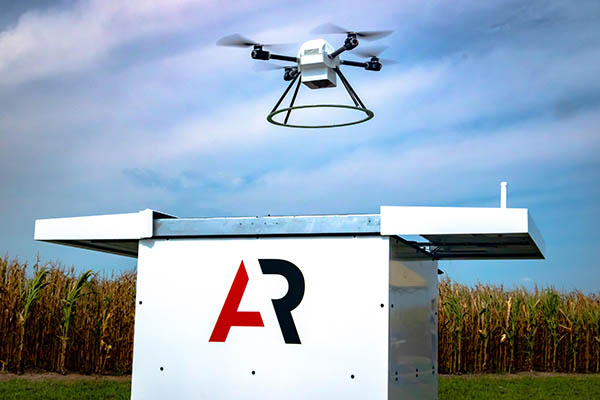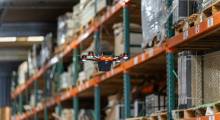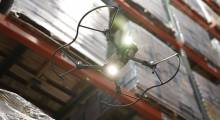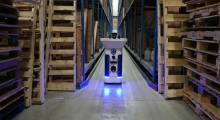WALTHAM, Mass.—Drones have moved from laboratories to real-world commercial applications, and drone service providers are rapidly maturing. Ondas Holdings Inc. yesterday announced that its Ondas Networks Inc. and American Robotics Inc. subsidiaries will be moving their headquarters to a new facility here. American Robotics will maintain its office in Marlborough, Mass., for flight testing and remote operations.
Ondas Holdings announced in May that it was acquiring American Robotics for about $70.6 million. Ondas Networks develops proprietary, software-based wireless broadband technology for industrial markets. American Robotics is a member of the MassRobotics consortium.
American Robotics markets its Scout autonomous system as a “drone in a box” under a robotics-as-a-service (RaaS) business model. Scout was the first drone to receive U.S. Federal Aviation Administration (FAA) approval for automated beyond visual line-of-sight (BVLOS) flights without a human operator on site.
The Ondas subsidiaries will move their business functions to an 18,000-sq.-ft. facility that will include 6,000 sq. ft. of flex lab space. The Waverly Oaks Park in Waltham is also home to Vecna Robotics and Veo Robotics.
Reese Mozer, co-founder and CEO of American Robotics, discussed how both the drone space and his company have matured with Robotics 24/7.
Identifying the need
“We looked at the drone space when we started the company in 2016 and saw a glaring problem,” Mozer recalled. “It's important to segment the market, since different categories have very different customer requirements. There were military drones and consumer drones, but the commercial space was the furthest behind in terms of maturity even as it represented the largest opportunity.”
“By our estimation, 90% of the potential applications for commercial drones required full automation to be practical,” he said. “We had the big realization early on that sending someone to walk around with a remote controller and a drone for a farm or an oil and gas facility or infrastructure inspection was not really practical.”
“For the past five-plus years, American Robotics has focused on getting Scout to meet the threshhold for fully autonomous technology to be valuable,” said Mozer.
Commercialization considerations
As with other forms of robotics, a research project isn't the same thing as a commercially viable product, noted Mozer.
“A robot in an academic laboratory is significantly different than a robot in the real world,” he said. “You have to undestand pretty deeply that something that works in a lab or on a YouTube video doesn't mean it can function at the level a commercial product needs to.”
“You have to ask the right questions early on. In the drone space, people like data, but how often do you need to collect that data, at what resolution, and what labor would it take to pilot the drone every time?” Mozer asked. “What are you using this data for, is it actionable, and what's the cost comparison between the value of the proposed robot and what you do today?”
“My favorite question to ask in the robotics or drone space when someone proposes a new use case is, 'Can you do it with a camera and a pole?'” he added. The answers to such questions may not be exiting, but they're necessary to balance against technologies in search of a mission, Mozer said.
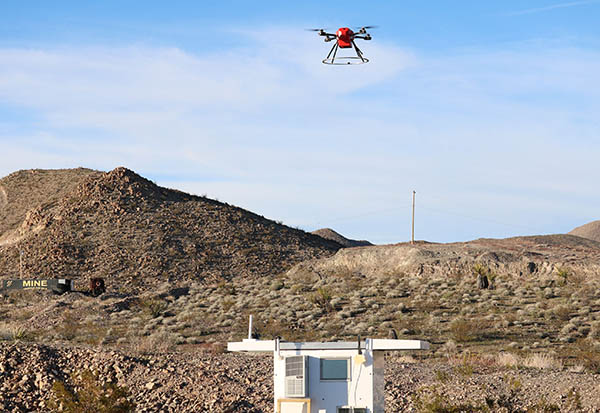
American Robotics takes a full-stack approach
In addition to the autonomous aerial drone, American Robotics has developed the ScoutBase weatherproof charging and edge computing station and ScoutView fleet management and analytics software.
“We chose a full-stack path because we recognized that the customer has to have a complete solution,” said Mozer. “If the robots don't exist off the shelf, then the customer has to make them. Robotics is very cross-disciplinary, and if you don't have control over the full stack, it can be complicated or impractical.”
“Some will say they focus just on software or the drone frame, but there's so much work for integration and fine-tuning what customers can use, I'd be skeptical about pieces of solutions,” he said. “Winners in this space tend to take a holistic approach.”
What about autonomous mobile robots (AMRs), where the software stack is evolving beyond the hardware providers? “That's correlated with the maturity of that market,” Mozer replied. “We can't just say we'll make the software without knowing the space.”
“Some people have a really strong desire for hardware to be commoditized,” he added. “Sure, you might be able to say that about cameras, motors, propellors, and some computing devices, but when you're building a robot, there's an endless list of things. It's a whack-a-mole problem, from the placement of sensors, mounting vibration damping, to power requirements and connections.”
“There's not a catalog of 100 different drone frames that anyone can pick for each use case. We're just not there,” said Mozer. “To optimize for cost and use, we'll come up with a unique configuration.”
“For example, Boston Dynamics has been working on legged robots for 15 years, and it had to invent the motors for them,” he noted. “Now we're starting to see more dog-like robots and standardization of those components. It takes 10 to 20 years for each sector to generalize.”
“To take a drone frame and make it work, we have to marry it with a base station, charging infrastructure, and unique communications solutions like Wi-Fi or radio,” Mozer explained. “We have our own proprietary, computer vision-based landing system. When moving from prototyping, remember there's no single airplane frame and no single car body. Why would drone form factors be any different?”
Overcoming the BVLOS bottleneck
Limitations on the ability to legally operate drones beyond the line of sight have been a bottleneck to adoption, acknowledged Mozer. “People always say they're waiting for BVLOS, but that's a misunderstanding of how the FAA works,” he said. “The FAA keeps regulating the National Air Space in a certain way until it's forced to change.”
“A lot of pieces went into American Robotics being the first company approved to operate drones with no humans onsite,” he said. “Part of it goes to asking the right questions. We looked at [BVLOS] as a baseline—either this happens, or there's no business.”
“We put a lot of focus on achieving that from a technology perspective,” Mozer said. “The full-stack piece was helpful because we had control of the whole system and the operations model. We could convince the FAA in a way that component manufacturers have no way of doing.”
“A lot of people lose focus, partly because of the investment culture in the U.S., which rewards quickly having stuff to sell,” he asserted. “It took us five years to get FAA approval in which we weren't selling anything. It was very painful, and we were near death a few times. Other companies get pressure from venture capitalists to sell things, and then they start to worry about customers, maintenance, and the next quarter of sales rather than solving the key engineering problem.”
“We were lucky and stubborn enough to stay focused rather than getting ahead of ourselves,” said Mozer. “We had to be innovative on a set of novel safety technologies. We had to prove the drones would be safe in X, Y, and Z and build systems to do just that.”
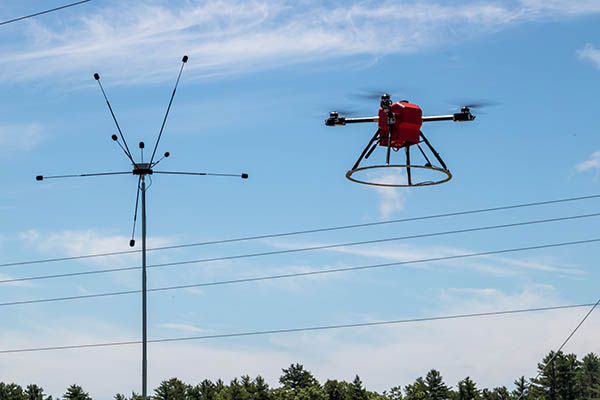
American Robotics enters growth phase
As American Robotics brings Scout to market and merges with Ondas, what's next?
“We're at a very exciting stage—the true technology risks are behind us, and we've gotten FAA approval, but there's still work to be done,” said Mozer. “We'll continue to learn from what we got right so far, so we want to make sure the operations infrastructure works and that customers are satisfied with their data.”
“There aren't 100 fully automated drone systems operating in the U.S. yet,” he observed. “We want to keep product reliability and functionality high. We're expanding the data that our system collects, as well as the analysis of that data.”
Now that American Robotics has merrged with Ondas and is publicly traded on the Nasdaq, the company has the resources for rapid growth. “We're growing our operations and sales teams and executing on this promise with manufacturing,” Mozer said. “We're looking to hire the best of the best—people interested in soving real problems.”
Startups should keep a tight focus
As the drone industry looks for applications to home in on, startups should keep their focus tight, Mozer said.
“It can be challenging—the unmet needs are so great, but one of our big jobs is saying 'No' to things,” he said. “My advice for the whole robotics community is that it's important to get specific use cases and markets right first. Don't be too fast to generalize.”
“Once somebody gets the value proposition for a selected number of use cases right, then there will be explosive growth,” said Mozer. “Remember the scale of how many physical assets there are in the world to be imaged by drones—millions of miles of pipeline and rail track. The 2020s are very much the decade of automated drones.”
About the Author
Follow Robotics 24/7 on Linkedin
Article topics
Email Sign Up

